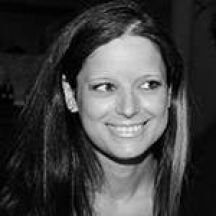Ever since its invention back in the 18th century, photography has been documenting life. At the same time, it focuses on inviting audiences to a rather subjective world while trying to be taken seriously as an art form. Photography has always been considered a male dominated profession, but luckily things are changing. Scholars, writers, bloggers, photography students and enthusiasts have been giving due to the female pioneers of the field. Most of them were always standing and/or hiding in the shadows, oblivious to how much they could acclaim and accomplish. Arguably, the technique, concepts and themes female photographers use, differ from those of male photographers. When most women were convinced that their place was in the kitchen and certainly not in the dark room, there were those who were struggling to surpass their male counterparts and work towards gaining respect and recognition for their work.
Those early years were fired with an intensity and passion I had never felt before. I was obsessed and driven. I thought about photography all of the time, I dreamed about it. I was totally in love.

Jill Freedman (American photographer, 1939-2019) was a highly respected New York City based documentary and street photographer, whose award-winning work is included in the permanent collections of The Museum of Modern Art, the International Center of Photography, George Eastman House, the Smithsonian American Art Museum, the New York Public Library, the Museum of Fine Arts, Houston and the Bibliothèque Nationale in Paris, among others. She appeared in solo and group exhibitions throughout the world, and contributed to many prominent publications. Freedman was born in Pittsburgh and got a university degree in sociology. At 25, she came to New York City and worked several temporary jobs including advertising copywriter. She discovered photography while experimenting with a friend’s camera and was self-taught. When Martin Luther King was assassinated, Freedman quit her job and went to Washington, DC and photographed there. Photographs from the series were published in Life and collected in her first book, Old News: Resurrection City, in 1970. She then lived in a Volkswagen kombi, following a local circus and later went on to document the arts scent in Studio 54 and SoHo. At the age of 36, Freedman started to photograph firefighters; this resulted in a book, which she published 2 years later. Later on she was associated with Magnum Photos and Miami Herald, while selling prints and publishing books. Jill was one of 13 photographers shown photographing New York in Everybody Street, a 2013 film by Cheryl Dunn. In 2016, Freedman's work and career – especially her images of New York City – was the subject of renewed interest, appearing in multiple Vice articles, including their 2016 photography issue and at Art Basel Miami.

Paola Gianturco (American photographer, 1939-) is a photojournalist and author, whose work has mainly focused on women around the world who have overcome difficult issues. She has documented women’s lives in 62 countries and had six books published. Her involvement with women’s issues is long standing and she has lectured about them in the US, Canada, France, United Arab Emirates and Spain. She spoke at UNESCO International Headquarters in Paris on International Women’s Day 2008 and her photographs were exhibited there in 2009 and 2011. Paola co- developed and taught Executive Institutes on Women and Leadership at Stanford University, and served on the Board of the Association for Women’s Rights in Development (AWID). She was a principal actor in the first women-owned advertising agency in the United States and is a current member of International Women’s Forum. Paola presented a TED TALK in 2014 in Dubai. In 2013, she was named one of “40 Women to Watch over 40” and in 2014, she was named one of “21 Leaders for the 21st Century” by Women’s eNews. In 2017 the YWCA inducted her into the Marin Women’s Hall of Fame.

Liliane de Cock (Belgian-American photographer, 1939-2013) was born near Antwerp and spent much of her early childhood in an orphanage to be protected from WWII bombs. She worked in factories as a teenager, including a factory that made photographic materials and then moved to America when she was 21. She lived in New York for about a year, and while living there, she formed an interest in photography. She then moved to California and was introduced to Ansel Adams. De Cock started working for Adams as a part-time assistant for developing prints, but it soon turned into a full-time position, where she ended up accomplishing many more skills from 1963 to 1972. She prepared Adams's prints, taught workshops, and even travelled with Adams to help with taking pictures. During these years, she honed her photography skills through this apprenticeship-like experience with Adams. Every year, Adams would give her up to 6 weeks of vacation time and she would travel the United States taking photographs of her experiences. In 1972, she became a Guggenheim Fellow and began showing her own work in New York. Adams wrote the introduction to her first book of photographs in 1973. Her photographs were also exhibited at the George Eastman House, the Massachusetts Institute of Technology and the Amon Carter Museum of American Art in the 1970’s. Liliane edited photography books for publication, judged photography competitions and was a photographic printer. Her last solo exhibition was in Belgium in 1991. She was recognized as one of “the most important female photographers alive” in 1996.
We will continue talking about female names that left their mark in photography and about contemporary female photographers who are still to emerge. There are a lot of female photographers out there deserving of praise and we can only hope to cover as many of them as we can. Please, follow this space to find out more.
De Cock presents to us a personal, private world. It is a world of individualistic beauty and intensity.






